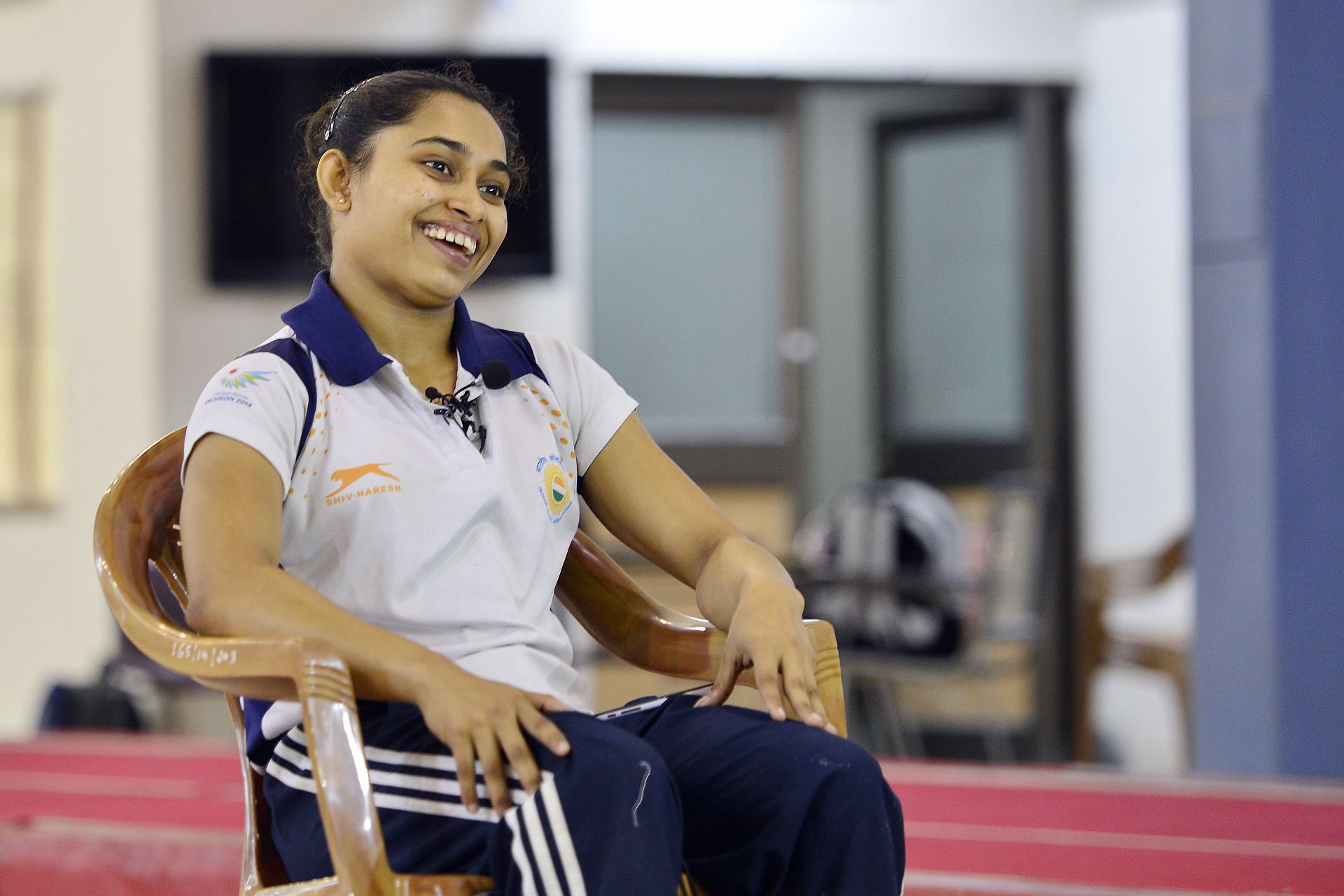
"I plan to continue coaching and contributing to gymnastics" – Olympic gymnast Dipa Karmakar talks about her life post-retirement
Indian gymnastics legend Dipa Karmakar announced her retirement from competitive gymnastics in October 2024 at the age of 31. The gymnast, who hails from Agartala, Tripura, etched her name in history books as the first Indian female gymnast to compete in the Olympics (2016 Rio).
Over her illustrious career, Dipa achieved multiple milestones, including becoming the first Indian woman to win a gymnastics medal at the Commonwealth Games (bronze, Glasgow 2014) and the first to clinch a gold medal at an international gymnastics event — the 2018 Artistic Gymnastics World Cup in Turkiye. In her most recent triumph, Dipa made history by winning the Vault gold medal at the 2024 Asian Women’s Artistic Gymnastics Championships, the first Indian to do so.
Dipa’s journey reached its zenith during the 2016 Rio Olympics, where she narrowly missed a podium finish in the women’s vault event, securing fourth place with her career-best performance. She has also earned prestigious national honors, including the Padma Shri and the Major Dhyan Chand Khel Ratna award.
In an exclusive interview with Sportskeeda’s Farzan Mohamed, Dipa opened up about her decision to retire, the challenges she faced throughout her career, and her plans for the future.
Below are excerpts from the conversation with Dipa Karmakar
Q: You recently announced your retirement. How did you decide whether to continue representing India in gymnastics or to retire?
A: I have been struggling with injuries for many years. I’ve undergone double surgeries. My career has seen ups and downs, with more downs than ups. This year, I participated in three World Cups and gave trials for the Asian Games, but I couldn’t make it. Even when I won gold at the Asian Championships, my shoulder was in bad condition, and my knee was already a problem. My body wasn’t allowing me to continue. So, my coach and I decided that this is the right time to retire because if your body doesn’t support you, there’s no point in competing. At this level, if I cannot give my best performance, there’s no reason to just participate.
Q: Tell us about your success during the 2016 Rio Olympics.
A: That was the best time of my life because everything went so smoothly. We had a great camp, thanks to SAI and the federation. They supported us whenever we faced problems. They even arranged equipment from France for us. At that time, I didn’t have any injuries, and everything was a team effort. We trained at the IG Stadium, and the infrastructure, recovery sessions, and administrative support were perfect.
An athlete can only give their best performance when they are mentally free, and I had the support of a psychologist, physio, and recovery sessions, all arranged by SAI. That period changed the perception of Indian gymnastics. Reaching the Olympics after 52 years and finishing fourth in the Vaulting event with my best-ever score was a proud moment. It’s every athlete’s dream to compete in the Olympics, and finishing fourth was an incredible achievement for me.
Q: What are your plans for the future?
A: I am currently working as the Deputy Director for the Government of Tripura. I manage both office work and coaching. I dedicate one session to office work and one session to coaching. This is a new beginning for me. I am helping two to three small gymnastics centers in Tripura with my experience. In the future, I plan to continue coaching and contributing to gymnastics.
Q: How did you start your gymnastics journey?
A: When I started gymnastics, I was flat-footed, which isn’t ideal for this sport because it affects jumping. During my admission to SAI, they told me that flat-footed gymnasts don’t succeed, but I believed that with passion and determination, anything is possible.
I started with Soma Nandi madam, and I’m grateful to her for guiding me in the right direction. Later, I trained under Bishweshwar Nandi sir, who has been my coach for the last 23 years. At that time, I had nothing except my coach. He taught me to focus on what I have rather than complaining about what I lack.
Back then, people believed that girls couldn’t excel in gymnastics, and in Tripura, most people didn’t even know what gymnastics was. But I wanted to make my state proud and prove that girls can achieve great things. Seeing my parents proud today makes me very happy.
Q: What kind of support did you receive from the federation?
A: Initially, the support wasn’t consistent. Nationals weren’t conducted regularly, and if the federation didn’t send entries, we couldn’t compete internationally. However, things improved over time, especially during the last Asian Games when SAI provided significant support. If these improvements continue, future athletes won’t face as many challenges. For instance, even after coming first in trials, I couldn’t participate because of unclear criteria. If athletes are informed about the criteria beforehand, it will help them prepare better.
Q: When you started, who was your role model?
A: My role model has always been my coach. His struggles and determination inspired me to move forward. Back then, we didn’t have easy access to information or phones, but I gradually learned about international gymnasts and started following their journeys. Their stories taught me how to deal with challenges and handle both good and bad times.